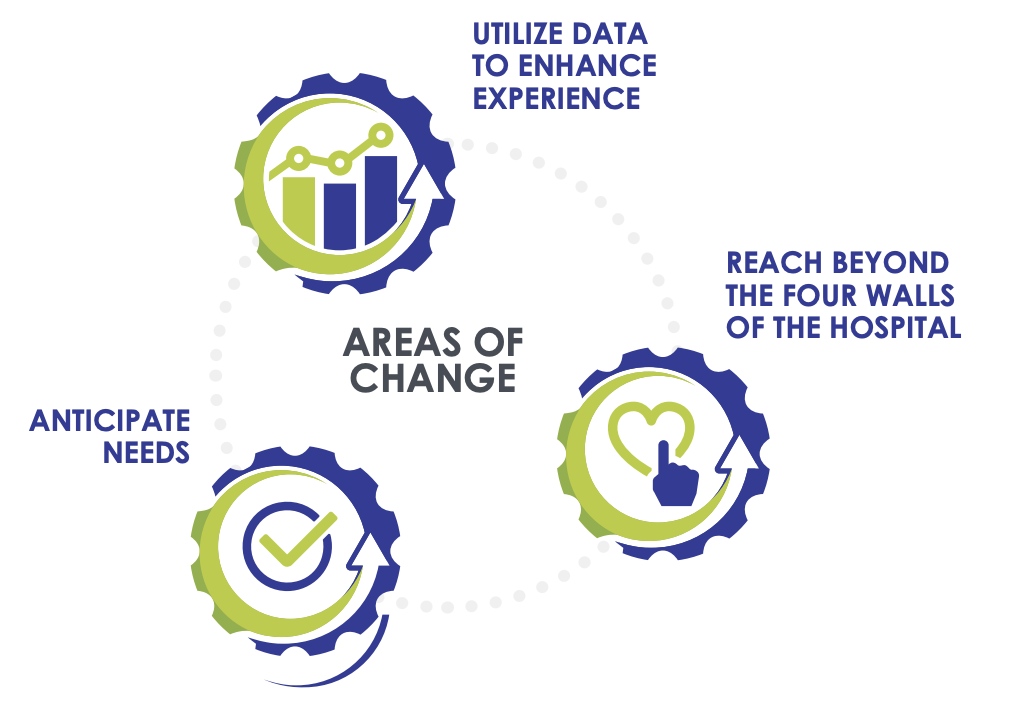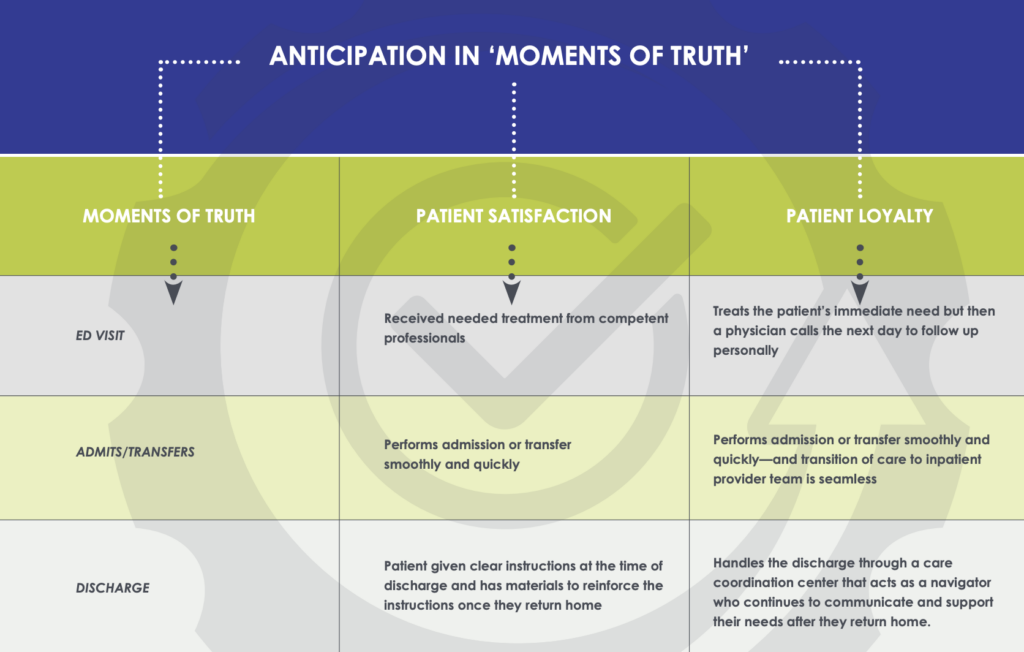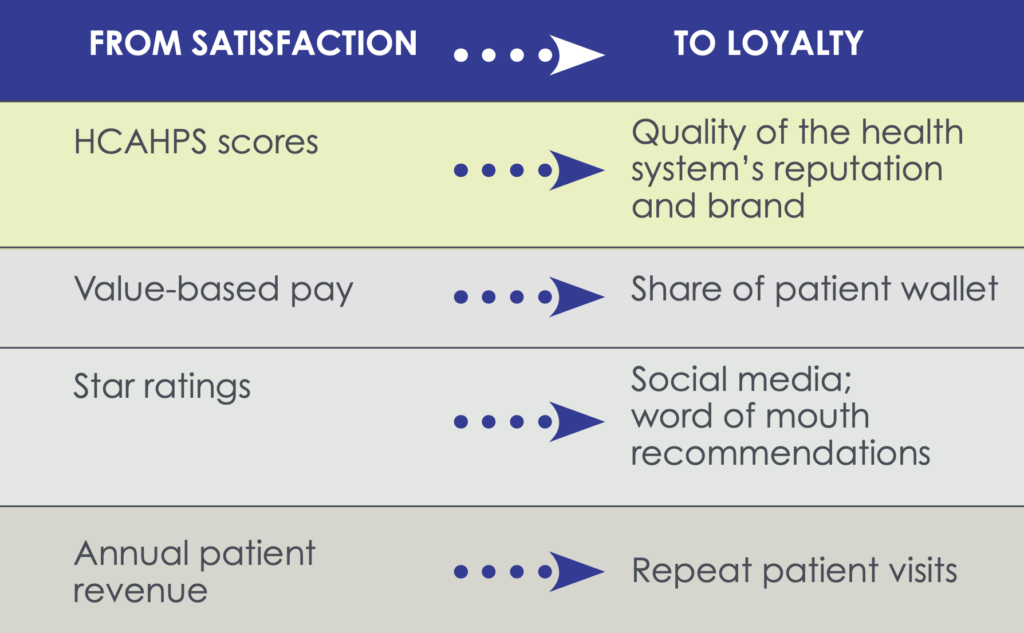Patient satisfaction is currently treated as one proxy for the quality of care a patient receives. Admittedly subjective, satisfaction survey scores are nonetheless put to all kinds of concrete purposes, from reimbursement to performance pay. While satisfaction scores undoubtedly help gauge the experience of a single episode of care, they ultimately fall short of a larger, more important goal: to get patients to see the health system and its providers in a spirit of long-term partnership and collaboration— not just from scheduling to billing, but from year to year and decade to decade.
Instead of focusing on episodic patient satisfaction, in other words, the way to create real value in today’s industry is to earn consumers’ loyalty.
In this white paper, we help provider organizations understand the benefits of expanding their vision of the patient experience from a singular or episodic view to a lifetime view of healthcare and partnership. We identify the larger context making this shift necessary and then analyze three domains of change that will help health systems earn patients’ trust beyond a single episode of care.



 Financial Sustainability
Financial Sustainability Highest Quality Care
Highest Quality Care








